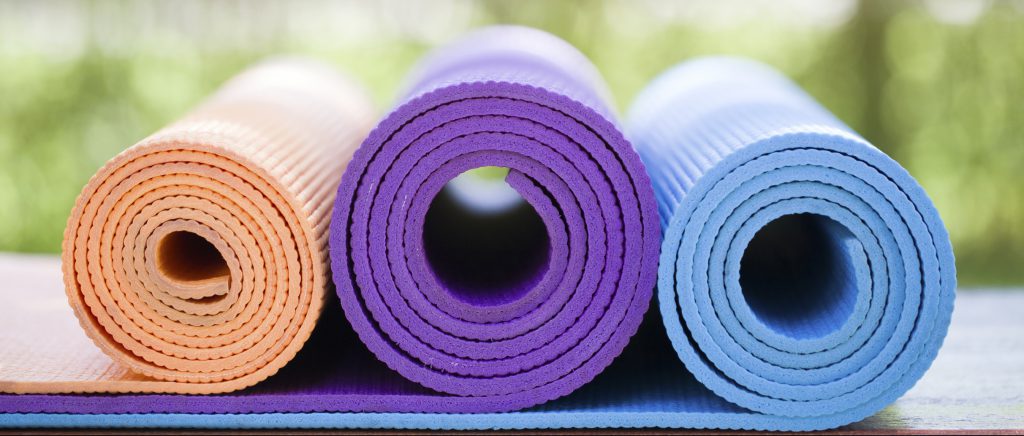
By Megan Westling DPT, OCS, RYT
Yoga. There are a lot of misconceptions that go along with this word. Maybe you’re thinking: “I can’t do yoga since I’m not flexible” or “Yoga is just a fancy word for stretching”. In reality, yoga does help with flexibility, but this is only one of its many benefits. It can act as a form of cross-training to help athletes prevent injury and avoid overuse of certain muscle groups. It can help to prevent falls by improving balance reactions. Whatever your fitness level or age, yoga is most likely a great option for you. Besides physical benefits, it also helps our minds to be clear and present, making it a great way to deal with stress or improve your energy level.
The hardest part of creating a new habit or trying a new form of exercise is figuring out how to start. Here are what I consider to be 3 important poses that can benefit anybody. They are good for beginners or seasoned “yogis”.
1. Cat/Cow
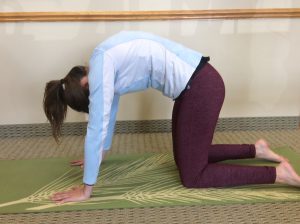
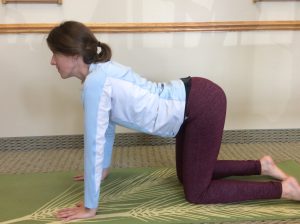
This pose is key to spine health and mobility. So often we are sitting- at work, driving, watching TV, etc. This pose allows the spine to find motion that we don’t always get in our day to day lives.
First, come to your hands and knees on the floor (or yoga mat) and align your wrists with your shoulders and knees with hips. From here, just start moving and don’t over-think. You can round the back, tucking you chin towards your chest, and bringing your hips underneath you. Then you can go the opposite direction, lifting your gaze forward, squeezing your shoulder blades and arching the low back. Move up and down (or even side to side) with your breath.
*A good variation of this pose, is to try it in sitting if your knees don’t like to be on the ground. Just arch and round your back while sitting in a chair.
2. Tree pose
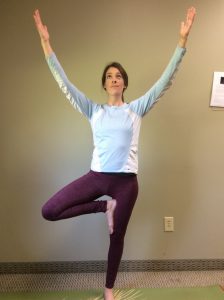
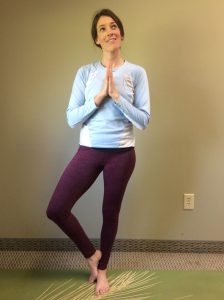
This is my favorite pose for balance. Start by standing with your gaze fixated on a non-moving object in front of you. Then, root down your standing leg by activating the muscle in the front of your thigh. When you feel balanced, lift your opposite foot up so the sole of that foot meets the inside of the standing leg’s ankle. (If you are getting totally confused here- just check out the picture below!) If you have more space in the hip, you can bring the lifted leg to your opposite inner thigh. Just make sure to avoid your knee joint. Engage your core here by drawing your belly button inwards- this will give you more stability. Feel free to just bring the hand to touch at your chest (or in yogi terms “heart-center”). For a challenge, bring your arms overhead, or even try closing your eyes.
3. Chair pose
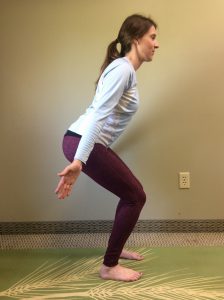
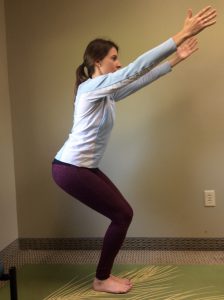
This is a powerful pose- and you will feel that power coming from your thighs and buttocks. Start in standing with your feet together, or if that is too much of a challenge, bring your feet shoulder-width apart. From here, reach your hips back so that you are bending your knees and coming into a small squat. If you have a mirror (or a helpful workout buddy), have them let you know if you are keeping your back flat- you shouldn’t have an arch as that will put more strain on the low back. Your eyes should be looking straight ahead, not at the floor! Options for arms: hands to touch, active at your sides, or reaching overhead. Do what feels right to you. When it starts to get hard, see if you can deepen your breath and stay there a little longer.
These three poses are just a start, but hopefully they spark your interest. Yoga can be a fun way to get to know your own body and often times the poses that are the most difficult are the ones we need the most. Safety is key, so remember that although you might feel fatigue, or “pulling” of the muscles, you should never be feeling pain. If you want to know more about how yoga can help you recover from an injury, manage a hectic day, or improve your over-all fitness level, feel free to reach out to me.
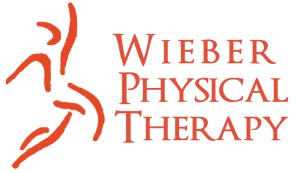
Leave a Reply
You must be logged in to post a comment.